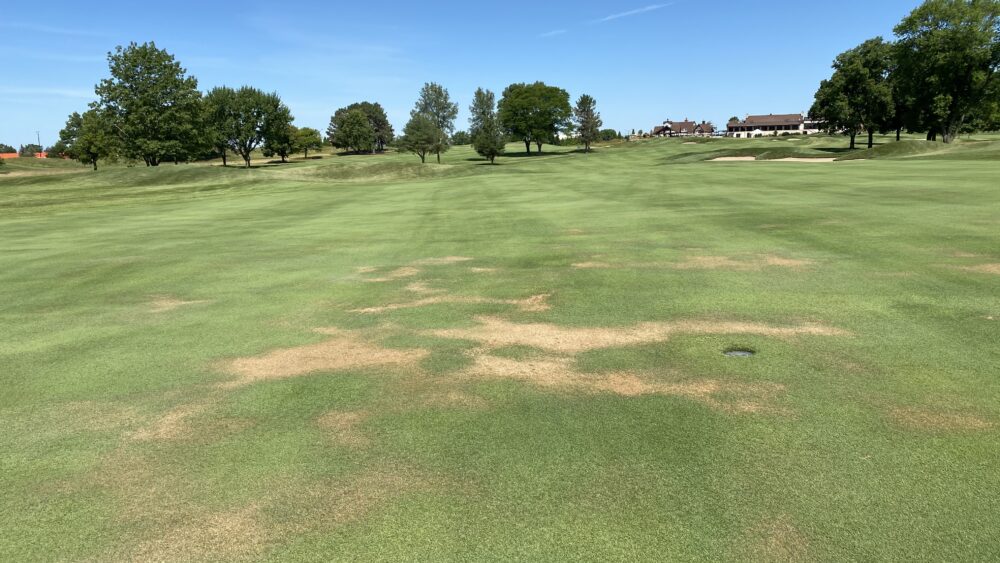Did you know that the wet/dry cycle which starts after a prolonged period of rainfall is one of the main contributory factors to localised dry patches caused by hydrophobicity?
Depending on where you’re located in Europe, you may be thinking that after the March downpours you have seen enough water to last a lifetime! Any dry spell that follows significant rain can really start to highlight problems with hydrophobicity and some of you may even start to see signs of dry patch in coming weeks. It is often the case that the winter weather masks such issues throughout the colder seasons, only for dry patch to become glaringly obvious come warmer, drier conditions in spring.
In the interest of conserving water – our most precious natural resource – ensuring that your essential irrigation is actually getting into the soil profile and helping the plant survive is of paramount importance. At a time where costs are rising and budgets are being squeezed, ensuring your water is used efficiently can free up valuable resources both in labour and budgets.
Causes of Water Repellency
Hydrophobicity in the soil profile is a wax-like coating that accumulates on soil particles and is a by-product of organic matter decomposition. It can also be caused by plant root exudates and fungal hyphae and is exacerbated by wet/dry cycles.
Water repellency causes water movement problems in two different ways:
1) at the surface, it impedes water’s movement into the soil, sitting on top and evaporating or running off.
2) below the surface it can also disrupt water’s ability to move freely through the rootzone. This results in uneven distribution of water (and anything it carries with it) and can also lead to preferential flow patterns where the water takes the “easy way” through the soil, straight down past the roots.

Signs and Consequences
On the golf course, this translates to localised dry spots, irregular shaped patches suffering from drought stress, or puddles of surface water (aside from those resulting from saturated soils due to heavy rains or faulty irrigation). In and around sloped areas, hydrophobic soil could cause runoff of both water and nutrients to pool in low areas.
If water repellency is preventing water from moving effectively through your soils, it’s preventing water-soluble nutrients and other applied materials from moving effectively too. This not only prevents your turf from uniformly getting what it needs, but also increases the potential for loss of expensive inputs and can have a negative environmental impact.
Combatting Water-Repellency from the Top Down
For problematic areas, Aqueduct and Aqueduct Flex (liquid and granular, respectively) are specifically designed to rapidly treat localised dry spots that begin on the surface. In as little as three days, Aqueduct and Aqueduct Flex help reverse the effects of water repellency to prevent turf wilting and promote a quick recovery. This can then be followed up with your normal surfactant programme throughout the year.
Contact your distributor or Aquatrols Account Manager to find out how these products can help you and the best strategy for implementing these into your practices at this time.


Comments are closed.